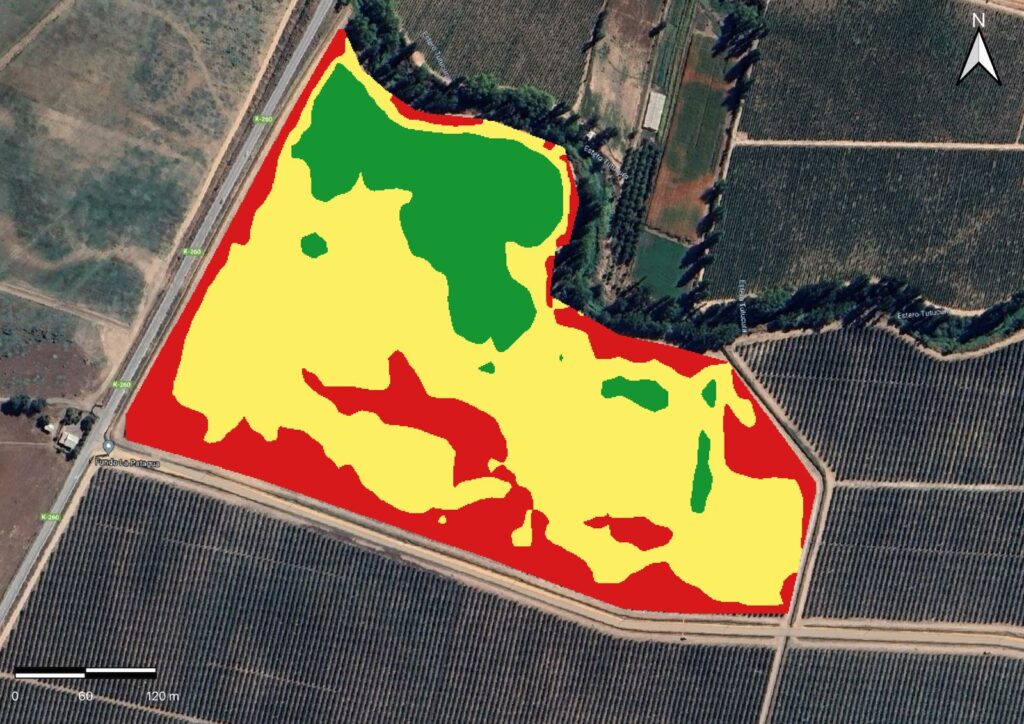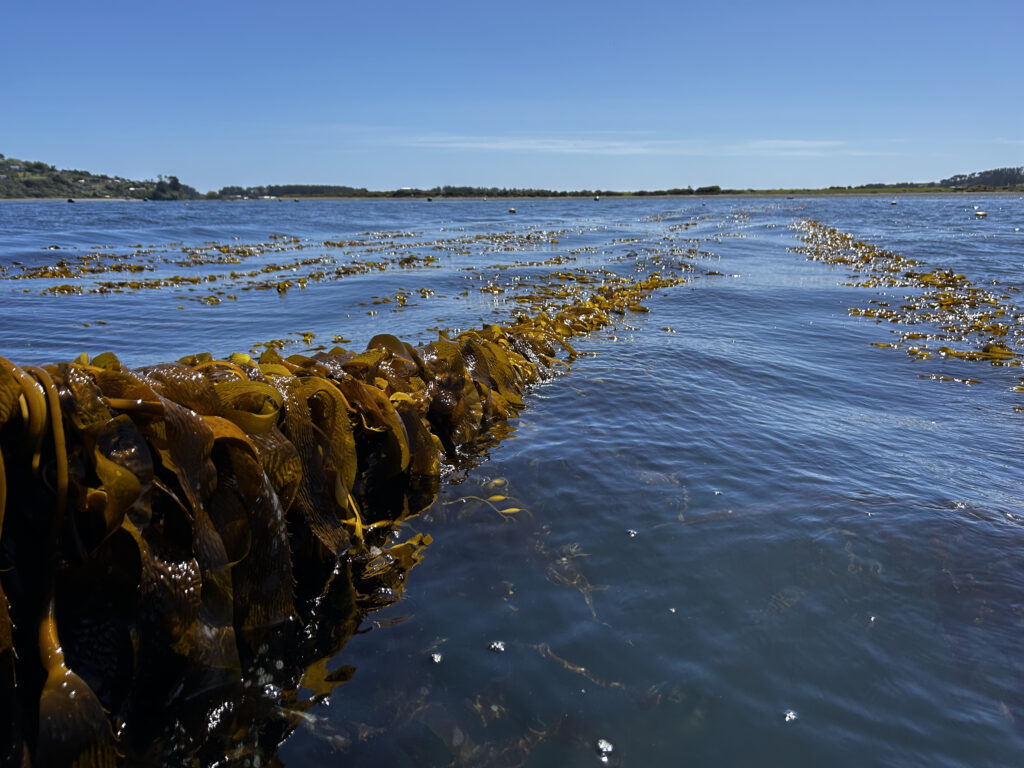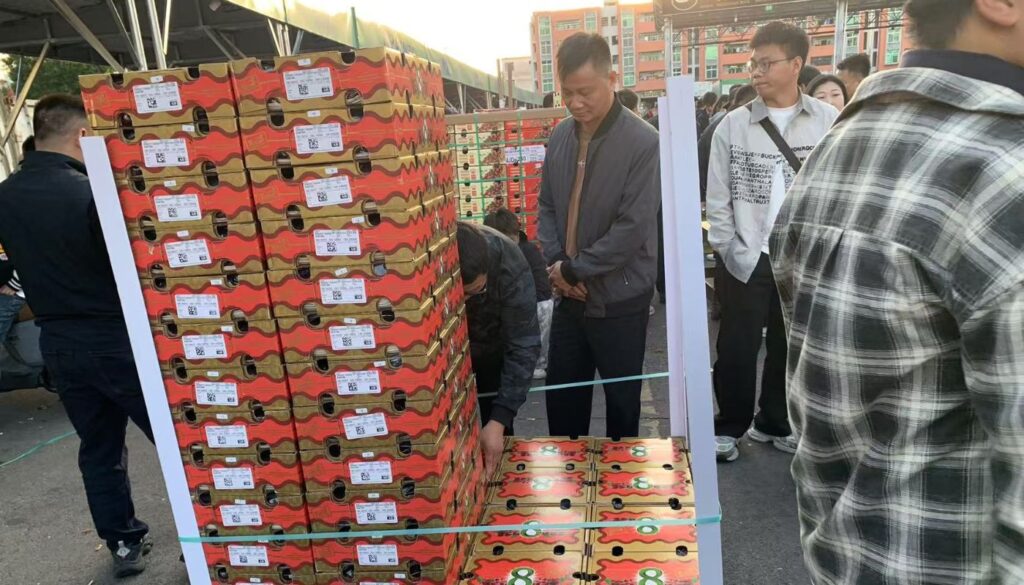By: Carlos Tapia T., Agricultural Engineer, M.Sc. – Technical Director Avium – Catalina Flores Labbé. Agricultural Engineer, Technical Zone of the Coagra Fruit Management Center.
If it is about achieving maximum productive potential, floral induction is a key process that requires achieving a balance between the floral and vegetative development of the tree, which will allow not only achieving the objectives in terms of production, but also in terms of fruit quality.
Floral induction is the first stage of flower development within the buds. "It is known as an internal condition of the vegetative meristematic apex of a bud that leads to its transformation into a floral meristem" (Gil Salaya, 2012). This is a process prior to floral differentiation in which there are no visible morphological changes and it is described as a qualitative change. The moment and way in which it occurs is genetically regulated, so it is difficult to know when it begins and ends in each species and variety.
Floral induction is a key process to achieve maximum productive potential, which requires a balance between floral and vegetative development of the tree in order to achieve both fruit production and quality. There are various factors (light, nutrition, irrigation, phytohormones, among others) that interact with each other and influence floral development, defining the number and quality of flowers for the following season. In addition, it is important to understand that while floral development occurs in the buds, other processes are also occurring in the aerial part and roots of the plants and that could have an indirect effect on floral induction.
In the case of the sweet cherry (Prunus avium L.), it has been studied that the flower induction process begins approximately 70 days after full flower (DDPF), coinciding with some abiotic and physiological stimuli in the species, such as the beginning of the shortening of the photoperiod (from the summer solstice, @ December 21), which unequivocally gives way to a "switch change", where the plant in a productive state stops the growth of the annual development of shoots to give way to the flower induction stage for the following season (Fig. 1). This explanation is very important to understand, since this process is essential to ensure permanent floral return and also production year after year, and it happens, in many cases, while the fruit is being harvested, and even before it can be collected in later varieties and areas.
Figure 1. Relationship between the development and cessation of annual vegetative growth in relation to the beginning of the floral induction period in cherry trees. Source: Adapted from Bonomelli et al. 2013.
This physiological technical analysis takes on great importance when establishing a technical analysis in the field, since the cessation of vegetative development at the end of spring is a normal and expected situation to give way to both the flower induction process and the hardening and lignification of annual material to be able to withstand the low temperatures of winter, in a state of complete dormancy.
Much is said about the concept of aternism in cherry trees, considering a productive analysis, fluctuations of high and low production according to each season. Although this may exist, it is ruled out that it is through a physiological action associated with the load of gibberellins in the seed, which can negatively intervene on the flower induction process of the following season, since in the species the development of the seed and its phytohormonal action occur before and separately from the beginning of the floral induction process, and would not have a direct relationship with the years.on and off” in terms of productive fluctuation (Fig. 2). This is described in other fruits, especially in pome species, where the development of the seed is connected or overlaps with the flower induction process for the following season, having a direct effect on the correct definition of “annualism”.
Figure 2. Period of fruit development, induction and flower differentiation according to species type and its relation to the concept of annual bearing. Source: Adapted from Feucht 1967.

But isn't it possible to talk about annual bearing in cherry trees? In theory, no, but this definition is associated with these interannual production fluctuations. The truth is that this does occur frequently, but it can respond to other factors of greater importance; the most important of these are described below:
Light
Light is a key factor for plants to be able to photosynthesize and complete their cycle normally. Over time, new technologies have been developed that increase the productivity and precocity of orchards, such as, for example, increasing the density of plants per hectare, using less vigorous rootstocks, etc. In some cases, high planting density can lead to a decrease in yield, probably caused by a decrease in light, and therefore a lower photosynthetic activity (Bondarenko, 2019). In some stone fruit trees, such as apricot, it has been observed that the effect of shading at the time of floral development in the buds can reduce the flowering rate during the following season (Bartolini, Viti, & Andreini, 2012). This is why it is so important to maintain orchards with correct lighting, with strategies to control vigor, lighting pruning or other management.
In cherry orchards with incorrect management in terms of canopy management, a vicious cycle of excess vigor and lack of light can occur, which can directly impact an inefficient floral induction process.
This is the reason for being able to manage the balance of permanent vigor control, in addition to carrying out cultural management such as summer pruning that allows taking advantage of the optimal moments, both the process of flower induction and the differentiation of these structures.
Nutrition
A correct nutritional state of plants is necessary to keep them in the right balance to produce buds, and for them to be able to develop flowers. In general, orchards with an excess of nitrogen fertilization lead to vigorous trees that are constantly developing buds, in direct relation to the first concept developed in the previous point, light!
The process of shoot growth and flower bud formation are antagonistic processes, and the arrest of shoot growth is a prerequisite for floral development (Koutinas, Pepelyankov, & Lichev, 2014). This is why nutrition must be delivered at the right time and according to the characteristics of each orchard and the qualities of the rootstock (Predieri, Dris, Sekse, & Rapparini, 2003).
Consider the large differences in nutrition patterns for the different types of rootstocks, with the most vigorous ones requiring the least nitrogen nutrition in spring to be able to develop optimally; on the other hand, low-vigor (and/or more productively efficient) rootstocks need permanent nutritional support from early spring to be able to achieve the perfect balance between vegetative and reproductive development, and to be able to best meet the needs of the species to carry out these processes.
Irrigation
The availability of water for fruit production has decreased significantly in recent years, so some orchards are unable to cover the total irrigation requirements of their crops. Furthermore, everything indicates that new productive areas will no longer have the water they currently have, so it is necessary to consider how the water deficit would affect the production and quality of the fruit.
In some fruit trees, fruit yield, size and quality can be maintained with controlled deficit irrigation at the right time, but there is limited information on its long-term effects on cherry trees (Blanco, Blaya Ros, Torres Sánchez, & Domingo, 2019). However, it was shown that, under the climatic conditions of Spain, there are deficit irrigation treatments that, in that country, affected vegetative development more than fruit production or quality, while other treatments did have a negative effect on fruit sizes (Blanco, Blaya Ros, Torres Sánchez, & Domingo, 2019).
It has been described that competition between shoots and flower bud development could be aggravated under imbalanced conditions (due to a rootstock, inadequate irrigation or other factors), while in favorable situations of water and nutrient availability, competition could be lower, favoring the transition from vegetative to floral buds (Koutinas, Pepelyankov, & Lichev, 2014). According to the above approach, and in the case of water availability, the most appropriate way to achieve maximum productive potential would be a water supply and fertilization according to the requirements of each particular orchard, always maintaining a balance in vegetative development.
Controlled deficit irrigation management is a fine line to a process of water stress, which could positively influence enhanced fertility as a response to the processes of flower induction and differentiation. However, excess fertility not only responds to an unbalanced production based on the normal development of the plant and a poor productive representation, with a high fruit set, but with poor quality characteristics and fruit condition; it can also be a response to worsening its phytopathological condition, where as a response to this type of abiotic stress, bacterial and fungal diseases can appear that are risky for the health status of the orchard.
Growth regulators
Phytohormones (mainly gibberellins and cytokinins) are responsible for interacting with the vegetative meristem of the buds, causing floral induction (Gil Salaya, 2012). GA3 It has been widely used from straw-colored fruit onwards in order to improve the size and firmness of the fruit. Its use has positive effects in improving the size of the fruit, however, applications of GA3, late in stage I of cell division, and late in stage III of cell elongation, It negatively affects floral induction, reducing the number of flower buds, both at the base of twigs and in darts, in direct relation to the increase in the concentration of AG use.3, (Lenahan, Whiting, & Elfving, 2006). Therefore, the excessive use of GA3 During late fruit development, it is simultaneously affecting floral return and productive potential of the following season (Fig. 3).
Figure 3. Effect of AG application3 in different concentrations (ppm) carried out during the end of stage I and III of fruit development and its effect on floral return (Flowers/cm2) and the following season's production (kg/plant). Source: Adapted from Lenahan, Whiting, & Elfving, 2006.

Experiences in Chile have shown that AG applications3 very late in the season, almost before harvest, at high concentrations (over 100 ppm), and even more so when successive partialling is carried out, have affected floral return for the following year. The number of flower buds per stalk or branch base has not been affected, but the number of flower primordia within these structures has been.
On the contrary, it has been seen that growth regulators such as paclobutrazol, prohexadione Ca, and other growth inhibitors can increase the number of flower buds (Koutinas, Pepelyankov, & Lichev, 2014). This type of growth regulators have been tested with the aim of reducing the juvenility period of orchards, however, they have a depressive effect on the vegetative development of plants, being an indirect effect to increase fertility through the processes of induction and differentiation of flowers. However, the irrational use of inhibitors of vegetative development implies that after application the wood ages quickly, there is no permanent renewal of structure and in the medium term the quality of the fruit is reduced (Facteau & Chestnut, 1991).








